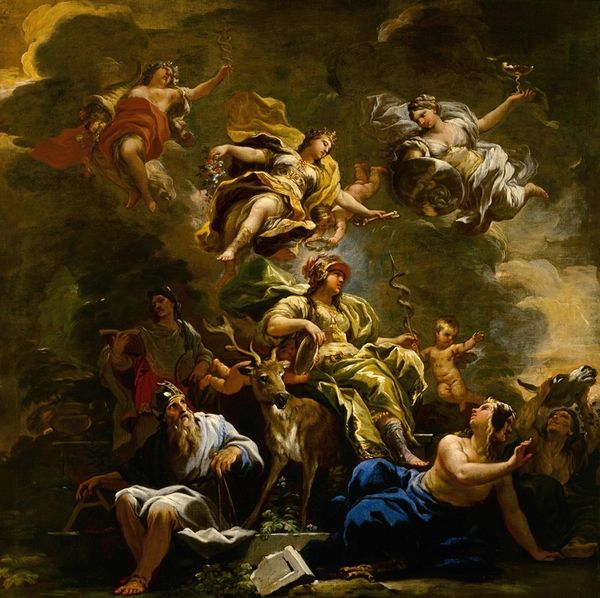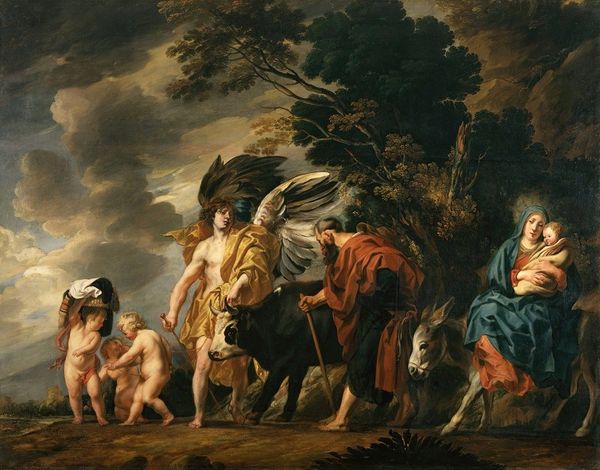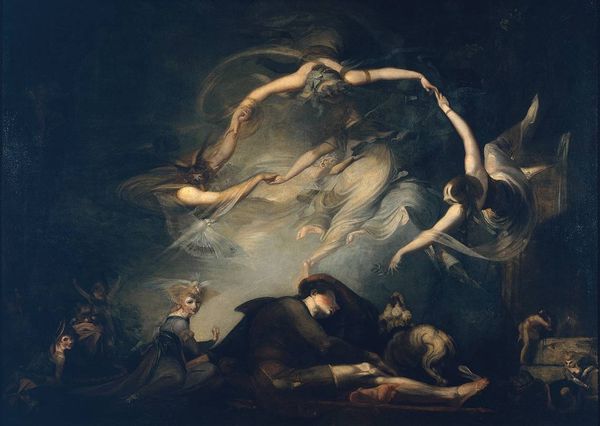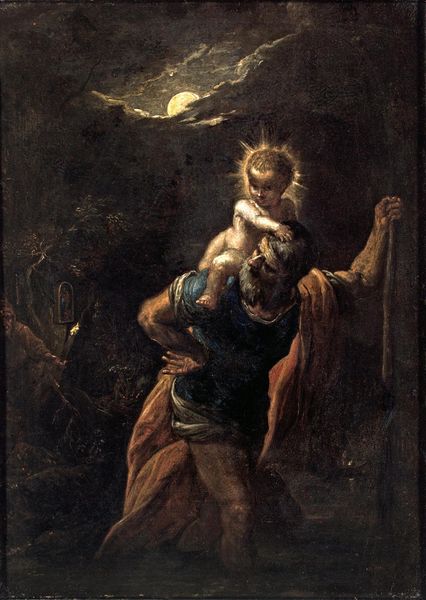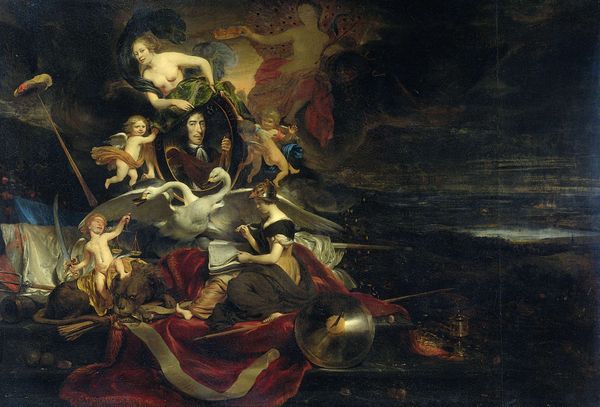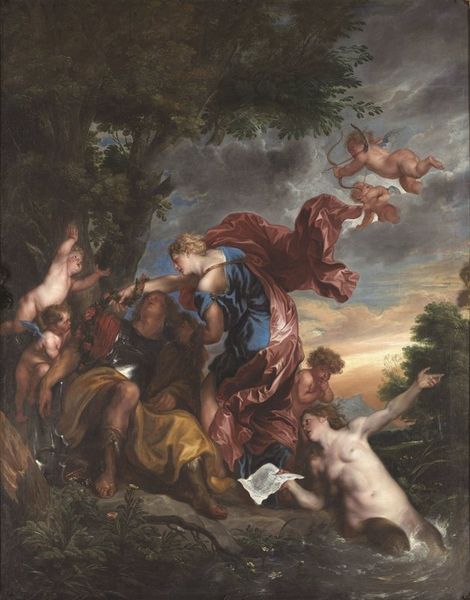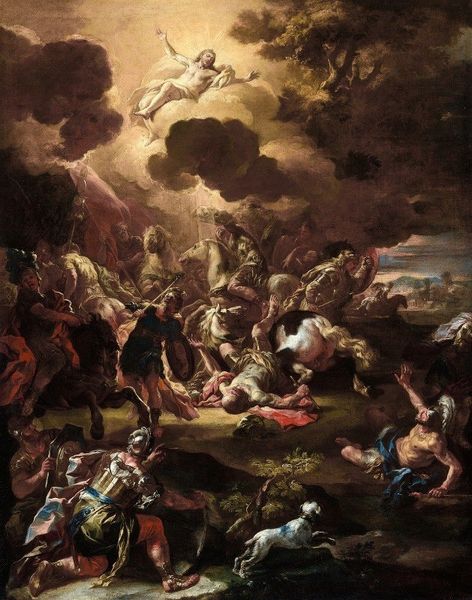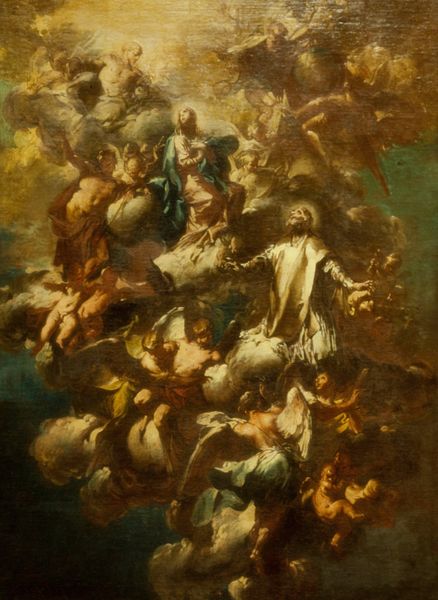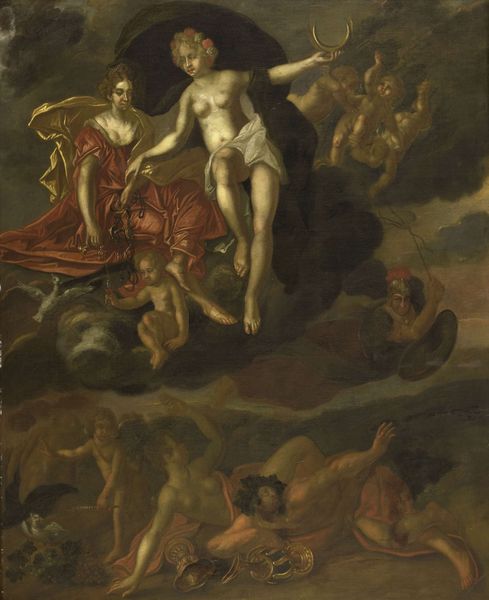
#
impressionistic
#
abstract painting
#
possibly oil pastel
#
oil painting
#
fluid art
#
neo expressionist
#
acrylic on canvas
#
underpainting
#
arch
#
christianity
#
mythology
#
painting painterly
#
watercolor
#
angel
#
christ
Dimensions: 246 x 360 cm
Copyright: Public domain
Editor: So here we have Bartolomé Esteban Murillo's "Jacob's Dream" from 1665. The angels ascending that ladder create such a strong sense of upward movement. What significance do you see in the work, especially considering its historical context? Curator: This painting speaks volumes about the sociopolitical landscape of 17th-century Spain, deeply intertwined with religious fervor and the power dynamics of the Church. How does the depiction of Jacob, seemingly passive in his dream, resonate with notions of divine intervention and perhaps even societal control? Think about how the ladder itself becomes a potent symbol, not just of ascent but also of a hierarchical structure. Who gets to climb and who is left dreaming at the bottom? Editor: That’s fascinating! I hadn’t considered the ladder in that light. So the painting could be interpreted as a commentary on social mobility? Curator: Absolutely! It urges us to critically examine the intersection of faith, power, and social class. Consider Murillo's patrons – often members of the elite. How might this painting have reinforced their worldview, or perhaps, subtly challenged it? And what about the representation of the angels? Do they reflect a diverse array of identities, or are they presented in a way that perpetuates certain ideals? Editor: It makes you wonder who has access to the "divine ladder," both then and now. I’ll definitely be thinking about those questions the next time I see it. Curator: Exactly! Art is a mirror reflecting not just the aesthetic tastes, but the deep-seated anxieties and power structures of its time. Reflecting on whose stories are privileged, and whose are erased, enriches our understanding of both the past and the present.
Comments
No comments
Be the first to comment and join the conversation on the ultimate creative platform.

